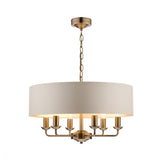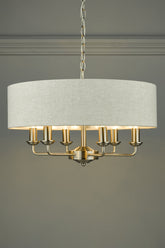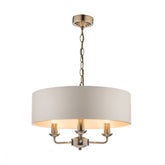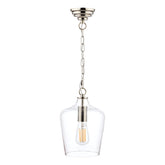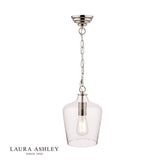Laura Ashley Wallpaper is made in the UK and it is classed as a paste the wall paper.
The wallpaper has a special backing paper, which means it doesn’t expand when wet. This means unlike traditional wallpaper you don’t need to soak it and the paste can go straight on the wall so there’s no need for a pasting table, cutting decorating time in half. Wallpaper hangs dry from the roll so it’s easier to cut (unlike cutting wet paper!).
PLUS, it comes off easily so easy to remove when you fancy a change.
TOOLS YOU WILL NEED:
FOR PREPARING YOUR WALLS:
FOR INSTALLING THE WALLPAPER:
-
Sharp craft knife and or,
- Wallpaper scissors (to cut the paper)
- Wallpaper paste
- Bucket - to mix the paste in
-
Plumb line or spirit level
- Tape measure
-
Paint brush or Roller and Roller tray - for applying the paste
-
Wallpaper brush or smoother - for ensuring paper is stuck down
-
Seam roller - to ensure seams are level
- Clean damp cloth - to clean off any paste on wallpaper surface or smooth seams
INSTRUCTIONS: ITS PROBABLY EASIER TO WATCH THE VIDEO FIRST!
STEP 2: MEASURE AND PLAN WHERE TO START:
TOP TIP
The reason for this is that a roll of wallpaper is 52/53cm wide. It means that the last “drop” you hang will go into the corner – which means if the wall is wonky or out – you can trim it in the corner, and it won’t be obvious.
- Consider the light in the room. If you are wallpapering the whole room start with strong natural light and move away from there, if creating a feature wall this is less relevant.
IF YOU HAVE A CENTRE FOCAL
POINT LIKE A FIREPLACE SEE INSTRUCTIONS BELOW.
- The first “drop” of wallpaper is key as all others will align to it, so it is important to ensure it is “plumb” otherwise your wallpaper could look wonky.
- From the left-hand corner of the wall you are about to decorate measure 50cm and make a pencil mark to give you your starting point.
- Using this mark, draw a plumb line using either a plumb-bob or spirit level. A plumb line is a vertical straight line, from which you will hang the first “drop” of wallpaper against and ensure it is hangs straight down.
FROM HERE IT GETS EASIER!
